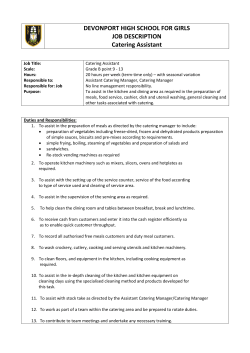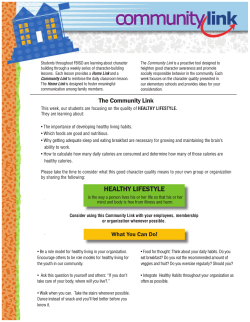
Characteristics of Food Residue in Accordance with Catering habits
Characteristics of Food Residue in Accordance with Catering habits Fei LI, Waste to Energy Research and Technology Council Department of Earth and Environmental Engineering, Columbia University Abstract Food residue is receiving increasing attention because of its large quantity of production, wide generation and potential environmental hazards. In order to study the composition characteristics of food residue, and to determine the reasonable treatment technologies, ten types of catering habits in Shanghai were sampled, and experimental research was conducted by means of analyzing the variation of moisture content, C/N ratio, salt content and metal elements. The results showed that moisture content varied greatly in accordance with catering habits. The C/N ratio and salt content fluctuated with the change of catering habits. Among the four metal elements, Mg had the highest content, followed by Al, and both Fe and Zn accounted for little content in food residue. Introduction Food residue, as one of the most abundant and problematic organic solid waste, is receiving increasing attention in China. It has been the major source of odor emanation, vermin attraction, toxic gas emission and groundwater contamination in collection, transportation and landfill of municipal solid waste due to the high organic concentration. The composition characteristics of food residue varied greatly with catering habits. The aim of this study is to provide a detailed description and statistical assessment of the composition characteristics of food residue generated at restaurants from different catering habits in Shanghai, as a typical city of China. Results Fig. 1 Moisture content of food residue Fig. 3 The salt content of food residue from different catering habits Fig. 2 The C/N ratio of food residue from different catering habits Fig. 4 The metal content of food residue from different catering habits Conclusions Method By physicochemical analysis of food residue, we found that moisture Ten types of catering habits were sampled, including western-style, local content of food residue varied greatly in accordance with catering habits. cuisine, Hunan cuisine restaurants and so on. Each type was selected three Most restaurants had the C/N ratio under 30 and salt content for each points randomly and each point was continuously sampled for three days. type was lower than 1.6%. Among the four metal elements, Mg accounted After pre-treatment, five characteristic parameters (moisture content, C/N for the largest proportion, and seafood restaurants seemed to have the ratio, salt content and metal elements) were analyzed. highest total value. Tel: +1-9179132074; Email: fl2398@columbia.edu; Columbia University
© Copyright 2025













